Ingredients (yield is approximately 1.3 liters): 1 kg of tomatoes, 0.8-1 kg of sweet peppers (about 5 small pieces), 1 medium carrot, 1 tablespoon of salt, 1/4 cup of sugar, 1/4 cup of vegetable oil, 1/2 tablespoon of vinegar, 3 leaves of lavrushka, a handful of pepper mixture, a couple of peas of allspice and 3 cloves of garlic (optional).
Wash the tomatoes and peel them from the seeds. If you have small tomatoes, then just cut them in half and take out the seeds, if the fruits are larger, then it is better to cut them into 4 parts. The recipe suggests wiping the ready-made puree through a sieve to get rid of the seeds, but for me personally it was easier to take them out right away. My grandmother generally leaves everything with seeds, so it's up to you. If you have free time and desire — take off their skins. Then grind into a puree using a meat grinder or blender (as in my case), pour into a saucepan, add sugar, salt, oil and pepper with bay leaf, put on fire until boiling. To make it easier to catch a bay leaf and then you don't get pepper on your tooth, make a gauze bag — then just take it out with a spoon before pouring it into the jar.
While the tomato mass is boiling, you cut the pepper lengthwise into 8-10 pieces (depending on the size) and carrots. I cut it into thin strips, you can cut it any way you want, as long as it's not too thin, so that it doesn't boil into mashed potatoes! Peppers, by the way, can also be cut into larger pieces, or vice versa with straws.
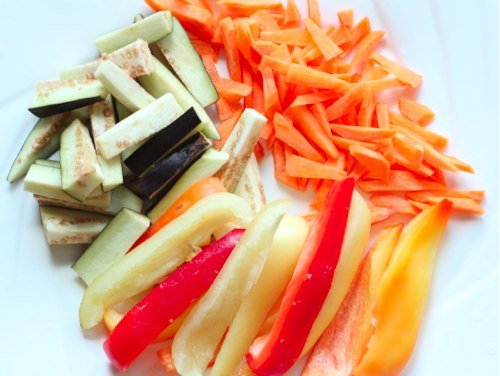
The tomato mass began to boil and a light foam appeared on the surface — you need to get rid of it with a slotted spoon (spoon with holes) or strain through a sieve. After that, you can add chopped carrots and peppers, wait until the lecho boils again, and then mark another 30 minutes. About 10 minutes before you are ready, squeeze out the garlic, if you like it sharper, then do not hesitate in quantity.
I want to add a little bit separately here by the amount of pepper and carrots — when you just add chopped vegetables, they will take up more space, and then they boil, become softer, and pepper also lets juice. So do not hesitate and put a lot!
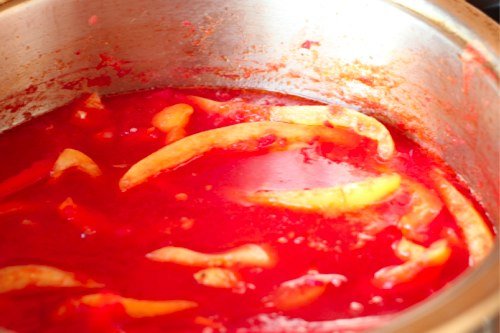
Turn off, cool down a little, add vinegar, mix well and pour into a jar. Lecho is ready! It remains only to wait until it cools down, and either immediately on the table or in the refrigerator. Vinegar, by the way, is also added at will. It is practically not felt there anyway, and some professionals in the field of conservation claim that it is not required for those cans that are being prepared for the winter.
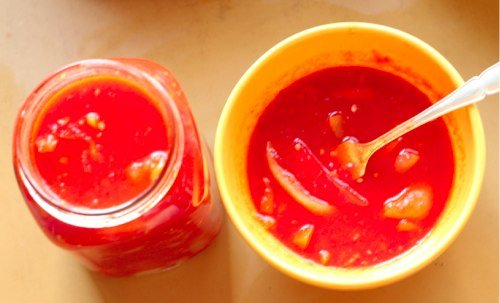
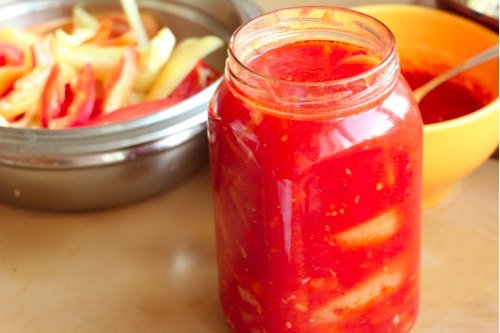
Ingredients: 1 kg tomatoes, 1/2 kg peppers (3-4 pieces), 1 medium eggplant, 1/5 cup sugar, 1/5 cup butter, 1 tablespoon salt without a slide, 3-4 bay leaves, a handful of pepper mixture and again a couple of garlic cloves if desired.
The preparation fully corresponds to the first recipe. Nothing new and complicated. Only the eggplant needs to be thrown a little earlier than the peppers (5 minutes). Pepper is also cut into 6-8 pieces, and eggplant is cut into small cubes about 0.5 cm thick and 3 cm long (about half of the index finger).
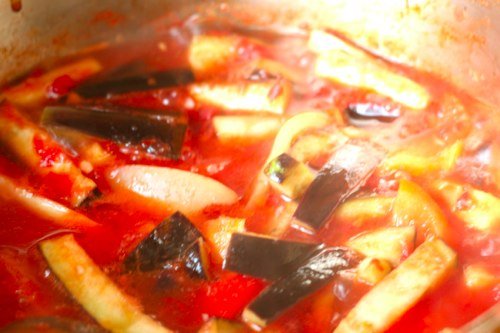
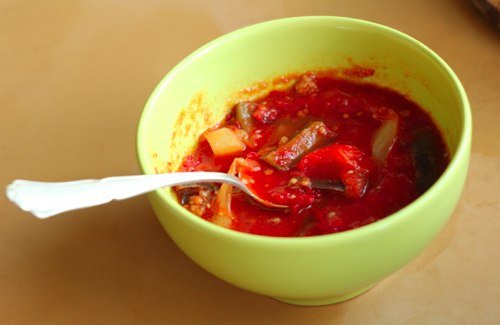
To summarize and write a little easier, then you should just grind tomatoes into puree, put it on fire, add sugar, salt, vegetable oil and spices, cut vegetables into small cubes-pieces and send them to boiling tomato puree.
All the problems with peeling tomatoes, removing seeds, etc., etc. — this is for more sophisticated and advanced users (and visually it just turns out more beautifully). Some also add various dry herbs: basil, a mixture of Provencal herbs, Italian herbs, tarragon, thyme — all this can be bought in almost any store. And onions, zucchini, squash are added to lecho, fried and not fried, with and without vinegar, tomato juice is added and without it — there are simply countless options!